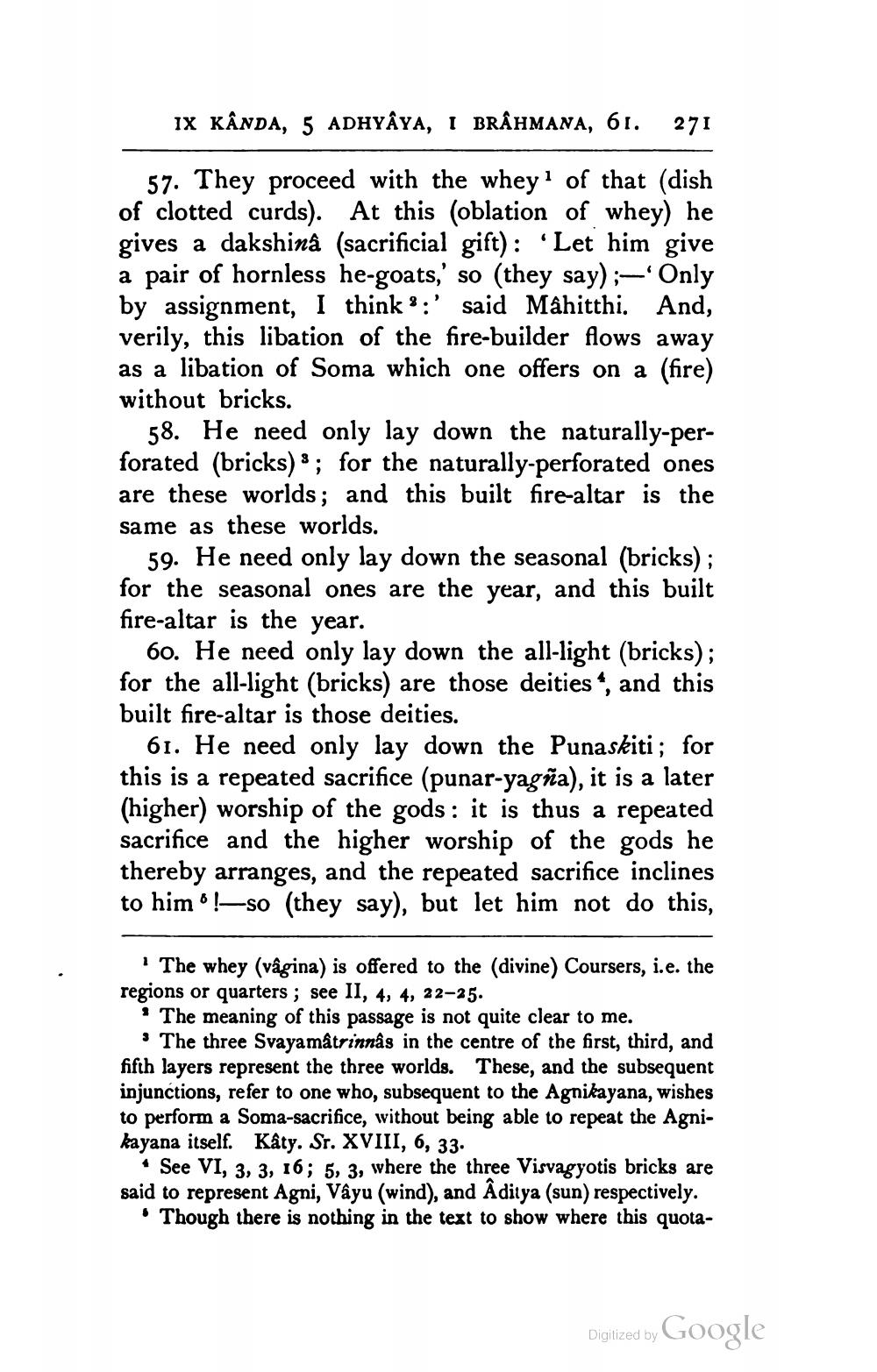________________
IX KANDA, 5 ADHYAYA, I BRAHMANA, 61. 271
57. They proceed with the whey of that (dish of clotted curds). At this (oblation of whey) he gives a dakshinâ (sacrificial gift): 'Let him give a pair of hornless he-goats,' so (they say);-'Only by assignment, I think ':' said Mâhitthi. And, verily, this libation of the fire-builder flows away as a libation of Soma which one offers on a (fire) without bricks.
58. He need only lay down the naturally-perforated (bricks); for the naturally-perforated ones are these worlds; and this built fire-altar is the same as these worlds.
59. He need only lay down the seasonal (bricks); for the seasonal ones are the year, and this built fire-altar is the year.
60. He need only lay down the all-light (bricks); for the all-light (bricks) are those deities, and this built fire-altar is those deities.
61. He need only lay down the Punaskiti; for this is a repeated sacrifice (punar-yagña), it is a later (higher) worship of the gods: it is thus a repeated sacrifice and the higher worship of the gods he thereby arranges, and the repeated sacrifice inclines to him—so (they say), but let him not do this,
The whey (vâgina) is offered to the (divine) Coursers, i.e. the regions or quarters; see II, 4, 4, 22-25.
The meaning of this passage is not quite clear to me.
The three Svayamâtrinnâs in the centre of the first, third, and fifth layers represent the three worlds. These, and the subsequent injunctions, refer to one who, subsequent to the Agnikayana, wishes to perform a Soma-sacrifice, without being able to repeat the Agnikayana itself. Kâty. Sr. XVIII, 6, 33.
See VI, 3, 3, 16; 5, 3, where the three Visvagyotis bricks are said to represent Agni, Vâyu (wind), and Âditya (sun) respectively. Though there is nothing in the text to show where this quota
Digitized by
Google




